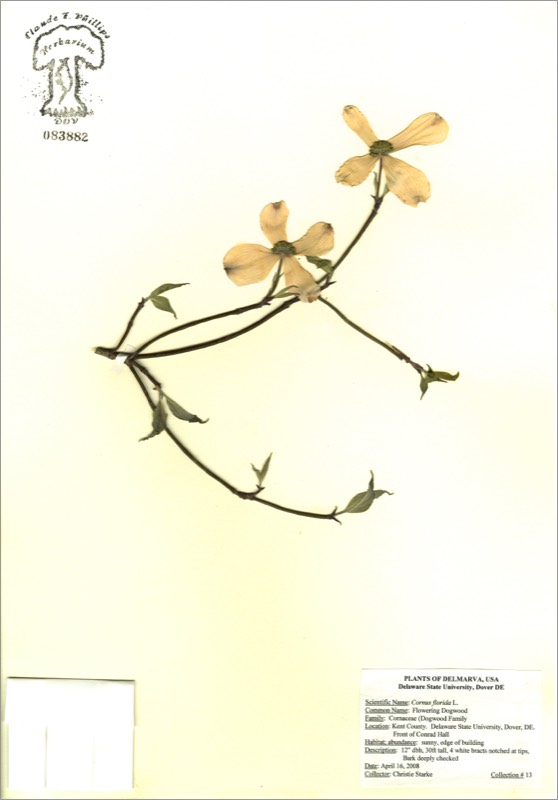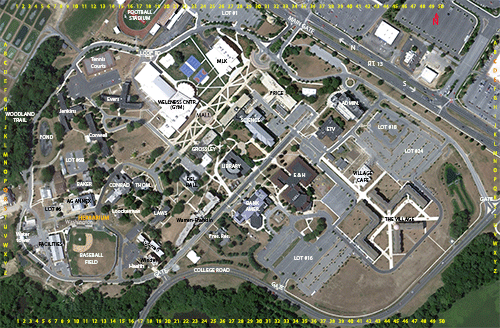Flowering dogwood

Cornus florida
FLOWERING DOGWOOD
Cornaceae
E. North America
Location: map coordinates S-16 (southeast side of Conrad Hall),
N 39°11'7'' W 75°32'40''
Planting history: presently unknown.
Native species, State Rank S5 (very common in Delaware)
FLOWERING DOGWOOD
Cornaceae
E. North America
Location: map coordinates S-16 (southeast side of Conrad Hall),
N 39°11'7'' W 75°32'40''
Planting history: presently unknown.
- small- to medium-sized deciduous tree
- etymology: Cornus = Latin for horn (which is hard; referring to the wood); florida = flowering
- the common name “dogwood” may be derived from “dagwood”, because the very hard wood was used to make daggers
- leaves opposite (as in most dogwoods); turn a rich red color in autumn; leaf veins arcuate (curve towards the tip, parallel to the leaf edges)
- flowers small, in a cluster surrounded by 4 large white bracts that are commonly mistaken for the petals; bloom early, before leaves emerge
- flower buds oval, with valvate scales (2 bud scales meeting in center)
- fruits red drupes (stone fruits), in clusters; food for birds and other wildlife
- bark checkered (small squares)
- natural habitat is forest understory; shade-tolerant
- susceptible to dogwood anthracnose (a fungal disease)
- wood very hard (hence the genus name Cornus [horn], and common name dogwood [dagwood] – see above). Wood also used to make tool handles, golf club heads, bobbins, wheel hubs
Native species, State Rank S5 (very common in Delaware)


HIT REFRESH TO START LOCATION GRAPHIC